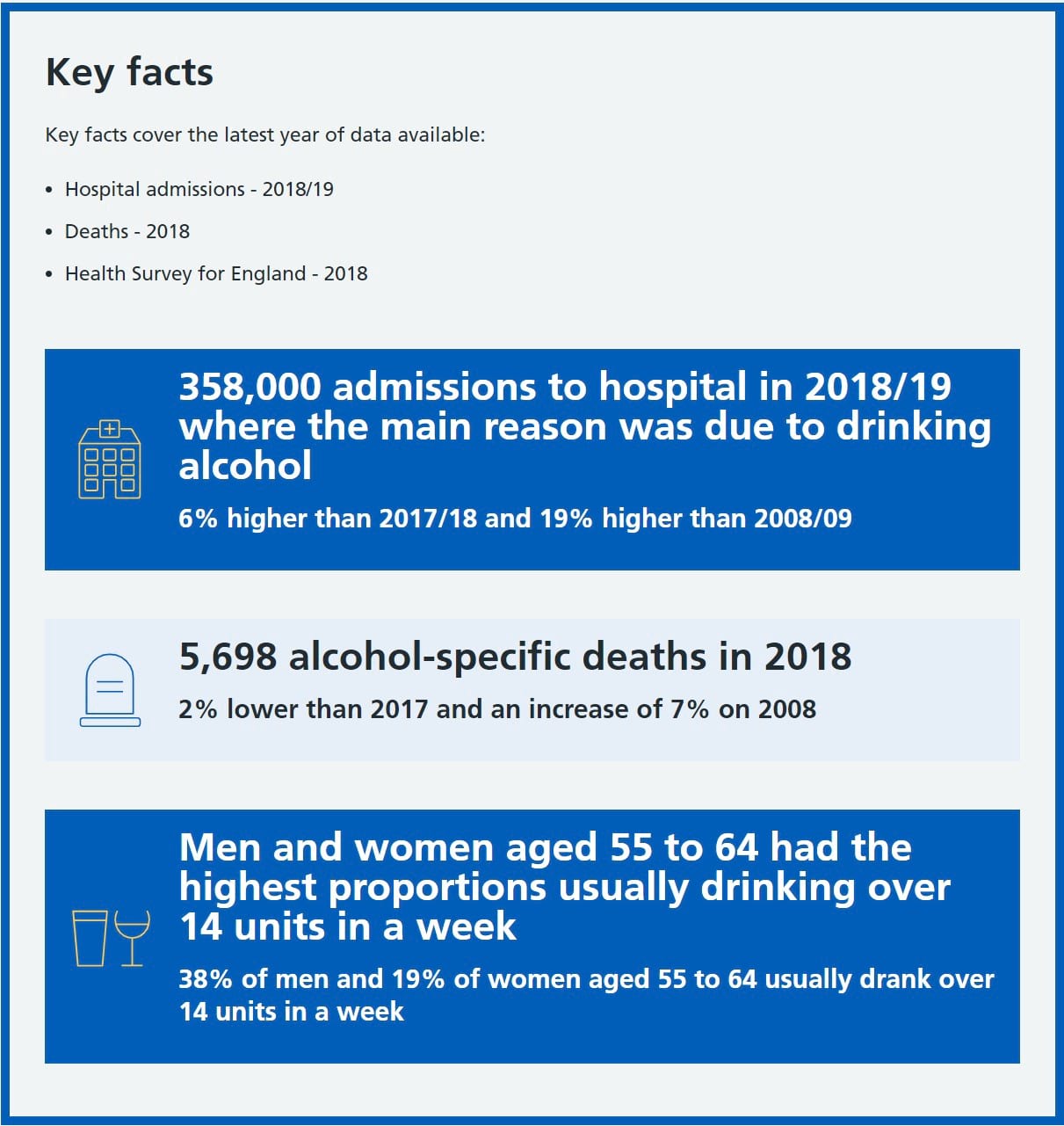Earlier this month (4 February 2020), the Office for National Statistics published its invaluable annual collection of data relating to all things Alcohol in England for 2019.
This blog posts simply highlights some of the key findings and trends.
Alcohol-related hospital admissions
Two measures for alcohol-related hospital admissions are used:
- Narrow measure – where the main reason for admission to hospital was attributable to alcohol.
- Broad measure – where the primary reason for hospital admission or a secondary diagnosis was linked to alcohol.
The narrow measure estimates the number of hospital admissions which are primarily due to alcohol consumption and provides the best indication of trends in alcohol-related hospital admissions. The broad measure gives an indication of the full impact of alcohol on hospital admissions and the burden placed on the NHS.
In 2018/19 there were 358 thousand estimated admissions where the main reason for admission to hospital was attributable to alcohol (narrow measure). This is 6% higher than 2017/18 and 19% higher than 2008/09.
There were almost 1.3 million estimated admissions where the primary reason for hospital admission or a secondary diagnosis was linked to alcohol, which is 8% higher than 2017/18 (broad measure). Changes over a longer time period will partly reflect improvements in recording of secondary diagnoses. This represents 7.4% of all hospital admissions.
In England in 2018, there were 5,698 alcohol-specific deaths which is 2% lower than 2017 and an increase of 7% on 2008. Just over twice as many men as women died from alcohol-specific causes.
Alcohol consumption
The proportion of men and women usually drinking over 14 units in a week varied across age groups and was most common among men and women aged 55 to 64 (38% and 19% respectively). Proportions drinking at these levels then declined among both sexes from the age of 65. Across all age groups, men were more likely than women to drink at increasing and higher risk levels.
The proportions of men and women who had not drunk alcohol varied across regions. Among both men and women, the highest proportions of non-drinkers were in London (28%) and the lowest proportions in the East of England (9%).
Alcohol treatment
In 2018/19, 76 thousand were treated for problematic drinking alone which was similar to the previous year ; 29,000 were treated for non-opiate and alcohol problems.
Expenditure on alcohol
UK household expenditure on alcohol has almost doubled to £20.0 billion in 2018, from £10.4 billion in 1987.
However, alcohol expenditure as a proportion of total household expenditure has fallen to 1.5% over the same period, from 3.4% in 1987.
Average weekly household expenditure on alcohol was £8.70 in 2017/18. People in the 65-74 age group spent the most, with an average of £10.60 a week.







